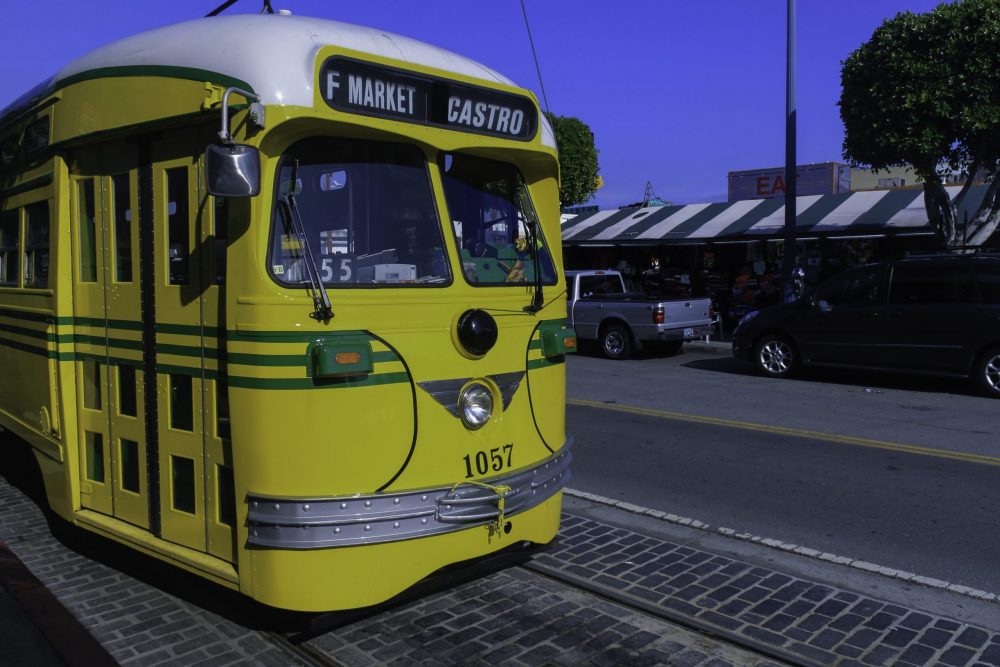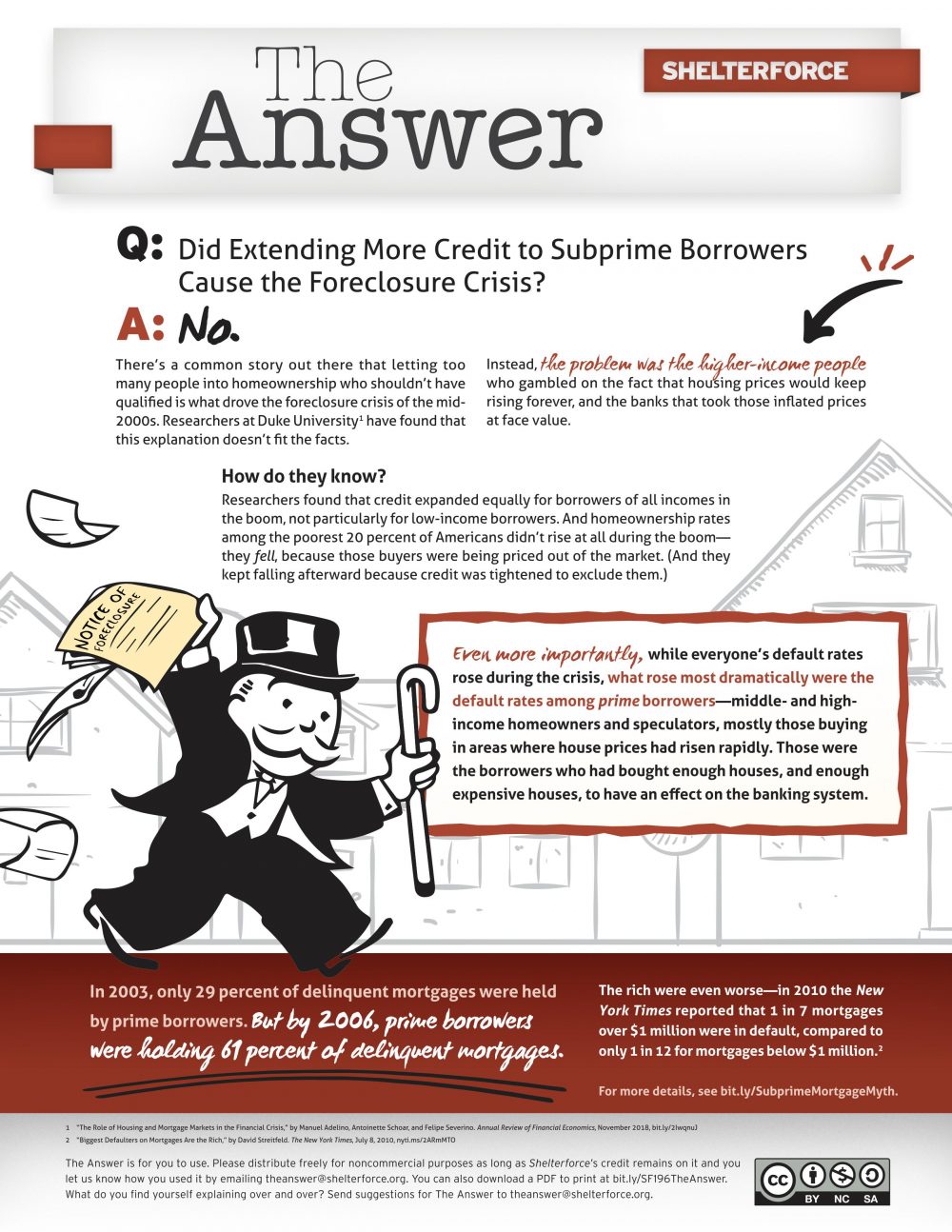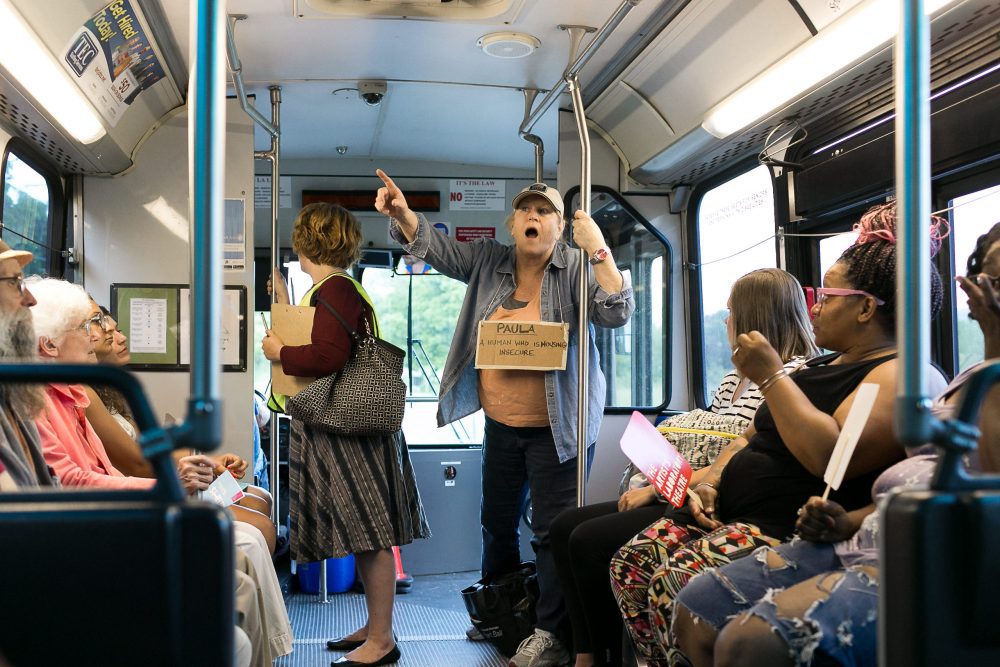
The F Market line is one of several light rail lines in San Francisco that uses historic equipment. Photo by Rodrigo Paredes via Wikimedia Commons, CC BY 2.0
In a Twitter thread responding to Rick Jacobus’s December 2018 article “YIMBYs, Thanks for Listening,” the conversation turned from housing supply and affordability to commuting and transit. BART, the Bay Area’s regional transit system, is seriously overloaded, commenters complained, and moving even a little ways out of the city can lead to hours-long, unreliable commutes.
In “YIMBYs, White Privilege, and the Soul of Our City,” Fernando Martí discusses the sense that one of the things that gets people riled up about the YIMBY movement is that while proponents talk about the importance of breaking into exclusionary surrounding communities, few of them actually want to live in those places, preferring instead to live in now-hip core neighborhoods.
Martí sees this as stemming from a sense of entitlement, and that’s definitely present. But I think there’s something more there. Having grown up in the age of fighting sprawl, climate change, and impoverished cities that “needed help,” I think Millennials, and even Gen Xers like myself, tend to have absorbed the idea that living in a walkable, bikeable, transit-rich area is itself an ethical choice—the smart growth choice. Those who opt for urban living therefore consider themselves to be voting with their feet for the kind of dense neighborhoods we need to build, and reducing their carbon footprint. Many of them still have families who worry about them in the big bad (racially diverse) city, against which they are holding up a different ideal of how we can and should live.
“The planet is burning down and electric cars will not save us,” says Victoria Fierce, of East Bay for Everyone.
“We’ve had a land use policy in the United States that resulted in extensive segregation of our communities [by] race and by income,” says Jesse Kanson-Benanav, a leader of the YIMBY group A Better Cambridge in Cambridge, Massachusetts. “Part and parcel to that segregation and social division was the impact on the environment, sprawling development that requires people to be in cars and eats up farmland [and] natural landscape. So I really wanted to be involved in discussions about how [to] re-urbanize America, building higher density communities as a way to address the social segregation and environmental destruction of 100 years of suburban sprawl.”
I expect this is partly why many folks who have chosen core neighborhoods are then so affronted to be called “gentrifiers” and told their presence in those places might be causing harm. They thought they were making the ethical choice, not just the culturally appealing one.
Now, the answer that will be both equitable and climate-friendly will be to make more places walkable, vibrant, transit-rich, and full of a range of jobs and housing for a range of incomes. Everyone is in agreement on that (though people vary on the exact balance of one super-dense center versus a regional set of mid-density places). But it’s clear that the long game includes massively expanding transit and retrofitting existing places to be more dense, more climate friendly.
Access to Shorter Commutes Until Then
In the meantime, however, we have a limited number of dense core neighborhoods where getting around without a car and without a lengthy daily commute are possible. Having access to such a neighborhood, even leaving aside who might have historical and cultural connections to it, affects people differently depending on work type and income level.
For example, a well-paid office worker tends to have regular hours that match with peak transit schedules. They often have the ability to work from home during bad weather, a sick kid, or a transit or traffic mess, and some can even arrange to work from home a couple days a week regularly to reduce the burden of the commute. Their jobs tend to be less likely to fire them because they had a commute snafu. They might have the ability to get some work done on a late train, checking email on a phone. They are more likely able to afford a reliable car with which to get to a commuter rail stop and to get around outside of work in a place without local transit. They are more likely to be able handle the financial costs of delays that come with long commute—such as after care, late day-care pick up, etc.
A low-wage worker, on the other hand, is more likely to have non-standard shifts and inconsistent work hours that don’t line up with peak transit schedule frequency, especially on commuter lines. They are more likely to need to take on multiple jobs, requiring even more commuting. Their jobs are often high turnover and their employers tend to see them as expendable, so their long commutes become even longer to build in a buffer so they won’t be penalized for being late. All of this makes non-work time for seeing family or taking care of errands at a premium. All the costs of a long commute, and of living in a place where transit is available for commuting only, fall more heavily on lower-income, lower-wage workers.
Therefore, I would argue, it is not only important that lower-wage workers have equal access to job-rich, dense, walkable core neighborhoods where transit service is more frequent and regular. Equity demands they should have greater access to those neighborhoods. When we think about the range of housing available at different price points that we are trying to fund and where we put it, we should take this into account.
(*Important notes: We still need affordable housing in all places, because (1) there are low-wage jobs everywhere and (2) everyone should have choices about making these tradeoffs and not be segregated anywhere.)






And unless or until we reach the point where transit is everywhere and frequent, we need equity in access to or a car. Efforts to reduce Vehicle Miles Traveled (VMTs) should be viewed through an equity lens. That includes a focus on reducing multi-car households, while facilitating low cost car access for lower income households to open up employment and housing opportunities, reduce the burden of long transit commutes and provide access to supermarkets with healthy food.
Why not impose a surcharge on registration of multiple cars at the same address, with proceeds used to subsidize car access/ownership for low income, zero car families, and for environmental offsets?
This is an excellent policy recommendation. Too often people and policy makers recommend transit solutions without regard to historic segregation that created inequitable communities and the needs of families who must commute to low paying jobs.